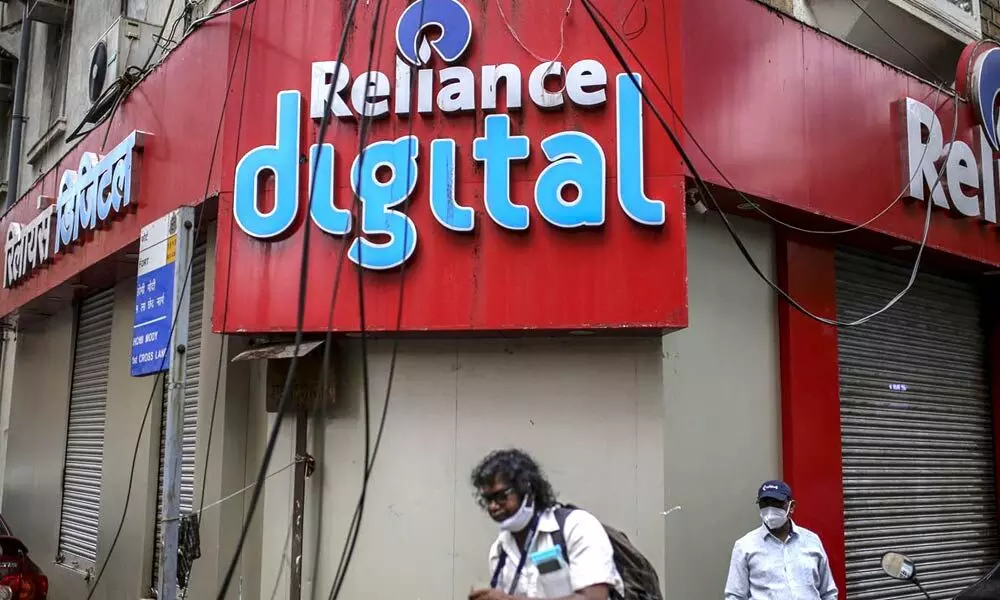Google's smartphone tie-up with Reliance hits a supply chain snag
Original goal was to blitz the market with inexpensive handset; device may launch with small volumes amid supply-chain hurdles
image for illustrative purpose

Ambani has drawn more than $20 billion in investments from US giants including Facebook Inc., Google and Qualcomm Inc. to bolster his technology presence. Beside the new smartphone, he is set to give an update this month on collaborations with Qualcomm and Facebook's WhatsApp on 5G and e-commerce
Billionaire Mukesh Ambani's plan to conquer the Indian market with a locally assembled Google-powered smartphone is facing headwinds, with supply-chain disruptions and rising component prices suppressing production volumes, people familiar with the matter said.
Ambani's Reliance Industries Ltd. originally envisioned sales in the hundreds of millions in the first years for the inexpensive device but now targets a small fraction of that at launch, the people said. The co-branded phone is set for its unveiling at the conglomerate's June 24 shareholder meeting, followed by an official debut as early as August or September, the people said, asking not to be named as the plan isn't public.
The tycoon wants to remake the world's fastest-growing smartphone market much the way he did wireless services - with aggressive pricing. But any delay in the effort would be a significant setback for Reliance and its Indian manufacturing partners. Chinese rivals like Xiaomi Corp., Oppo and OnePlus have established their brands and set up local manufacturing facilities as they pursue the same audience of consumers upgrading from basic 2G devices. Engineers at Reliance and Alphabet Inc.'s Google have combined forces to tailor a device for the technology-hungry but price-sensitive country whose internet users are expected to surpass 900 million by 2025. They've created a hardware design and a version of the Android operating system that can deliver a high-end experience without expensive materials, according to the people. But sourcing the components has proved a hurdle after the coronavirus pandemic boosted demand for electronics globally and led to shortages.
Cultural differences at Reliance and Google have also surfaced during the process, with the Indian company relying on a top-down operating model while the US engineers are more self-directed, the people said. That's resulted in last-minute decision making and calls in the middle of the night, in contrast to Google's usual preference for planning things months in advance. Google and Reliance representatives didn't respond to emails seeking comment.
A meeting between Reliance and Google teams as late as last week, a mere fortnight before Ambani's planned unveiling, failed to yield any finality on the hardware specifications, the people said. Vital parts like displays and chipsets are in short supply and taking longer than usual to procure, bringing uncertainty to the decisions over hardware choices.
The time to get such materials has doubled to about 60 to 75 days from the earlier 30 to 45 days because of shortages in China, which produces and supplies components for nearly every smartphone on the planet, the people said.
A microprocessor going into a smartphone battery charger has nearly doubled in price to 9 cents from 5 cents in a matter of months, according to a person working for an Indian contract manufacturer in talks to assemble the Reliance-Google device. Display prices have shot up 40 per cent and getting a chipset bulk allotment is proving extremely difficult, the person said.
Delivery times for so-called surface mount technology machines that can assemble thousands of smartphone micro-components an hour have reached six months, compared with 45 to 60 days as recently as January, several people said.
Soaring shipping costs have added to the challenges. A 20-foot container from China to India that cost $800 pre-pandemic jumped as high as $5,000 and now goes for $3,600, according to a person at another Indian contract manufacturer.
Reliance and Google started the project after the companies struck a broad alliance last July. For about nine months, Google engineers in Silicon Valley have worked on the challenge of delivering a premium software experience at a previously-unseen price. The team is trying to make the operating system more responsive and resilient to crashes with more frugal hardware. This is a familiar effort for the company, which has had several prior initiatives for making Android friendlier to more basic devices, such as with its Android One push.
Ambani has drawn more than $20 billion in investments from US giants including Facebook Inc., Google and Qualcomm Inc. to bolster his technology presence. Beside the new smartphone, he is set to give an update this month on collaborations with Qualcomm and Facebook's WhatsApp on 5G and e-commerce. (Bloomberg)


